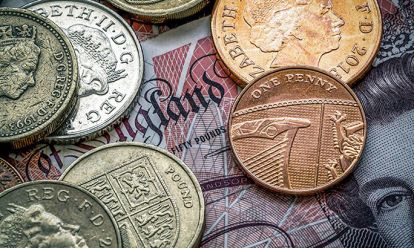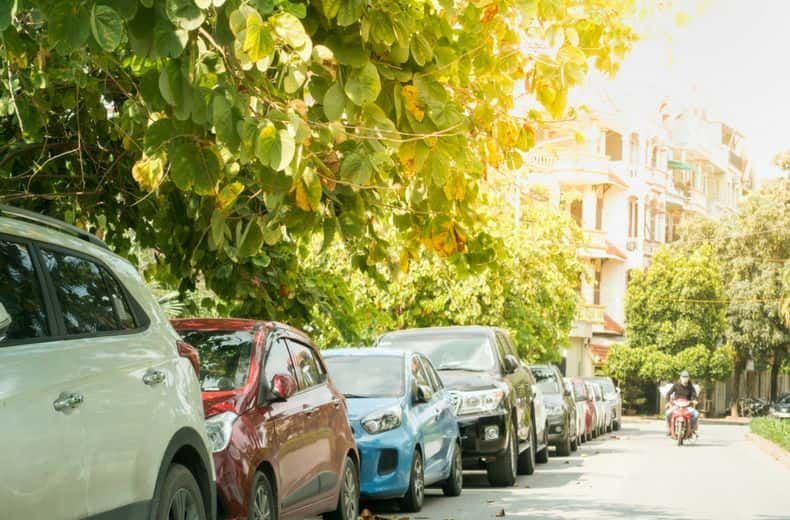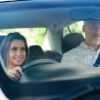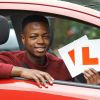Like many things however, practice makes perfect, coupled with a good understanding of how best to execute the manoeuvre.
So, when preparing to take your driving test, make sure you’ve read our essential guide to parallel parking first.
What is parallel parking?
Parallel parking is a means of parking your vehicle parallel to the road, usually in a line of other vehicles.
Typically, you’ll drive your vehicle alongside the one in front of the available space, before reversing it in.
It’s generally considered one of the trickier skills for new drivers to learn, but becomes second nature with practice and can be essential when hunting for a parking space in a busy street after you’ve passed your test.
When do I need to parallel park?
Parallel parking allows you to park in a smaller space than would be possible if you were driving forward into it.
Driving forward into a roadside space is usually only doable if two spaces in a row are unoccupied.
By reversing in, a driver can take advantage of a single empty space, not too much longer than the car.
Most residential roads accommodate roadside parking as standard, and in town and city centres where space is a premium, parallel parking might be the only option to get a space.
- Parking guide: where you can and can’t park
- Did you know that we offer specialist learner driver insurance?
- For additional parking assistance, why not check out our parking range on RAC Shop
Learner Driver Car Insurance
Only pay for the cover you need until you’ve passed your test. Get learner driver insurance so you can practice outside of your lessons.
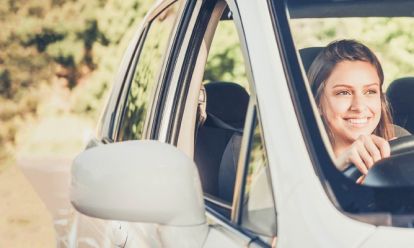

How do I parallel park?
These instructions assume you’re parking on the left-hand side of the road (i.e. with the flow of traffic).
If parking on the right-hand side, the directions are reversed.
This is a general guide and while the principles will remain the same, your driving instructor might have their own preferred methods and reference points for teaching. First things first:
- Make sure the space you are aiming to park in is big enough.
- Indicate, then pull up alongside the space and check there’s a minimum of two feet either end.
- Edge forward slowly, until the centre of your passenger side front window is roughly lined up with the front of the car in front of your space - if it’s facing the same way as you. (If it’s parked facing the opposite way, line up your passenger window with its back bumper).
- Check your mirrors, and turn to check your blind spot.
- Once you are happy it is safe, slowly begin reversing, looking behind you over your left shoulder and through the rear windscreen.
- Slowly reversing now, roughly line up your back tyres with the back bumper of the the car in front of your space.
- Now apply your handbrake and check your blindspot again, as when you turn to reverse into the space, the front of your car will swing out into the road slightly - so you will need to ensure nothing is coming.
- If it is safe to do so, turn the steering wheel one complete turn to the left. Keep things nice and steady, concentrating on achieving a full turn.
- Start slowly reversing, using the nearside mirror to check the position of the kerb, and the rear view mirror to see the vehicle behind you.
- Once you can see the kerb in your nearside mirror and you’re clear of the car in front, it’s time to stop the car and starting turning the steering wheel to the right.
- This time, use full lock, bringing the front of your car in towards the kerb. The trick here is fast steering but slow reversing - so quick hands, but steady feet.
- Straighten up your position on the road, by again turning the steering wheel to the left so the car is reversing back straight.
Black Box Insurance
Want to pay less for your car insurance? Whether you’re a new driver or just looking to reduce costs, we can help.
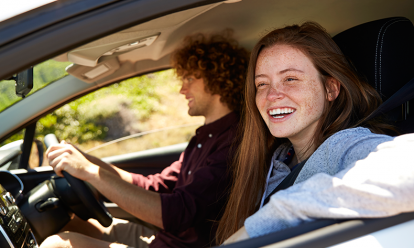

Will I need to parallel park on my driving test?
Potentially, yes. Since changes to the driving test were made in December 2017, the examiner will now ask you to complete one of the following manoeuvres:
- parallel park at the side of the road
- park in a bay - either by driving in and reversing out, or reversing in and driving out (the examiner will tell you which you have to do)
- pull up on the right-hand side of the road, reverse for around 2 car lengths, and rejoin traffic
Will I fail my driving test if I can’t parallel park?
Manoeuvres have been the downfall of many a learner driver’s test – but encountering difficulty doesn’t have to mean an automatically failed test.
The examiner will be looking to see that your observations are thorough; that you don’t get too close to the parked car in front, and that you stop reasonably close to the kerb without mounting it.
You’re likely to notch up a standard driving fault on this section if you need to reposition to correct a loss of control or accuracy.
This could include touching the kerb, or demonstrating a lack of all-round observation.
It is also, however, fairly common for drivers to pick up a serious fault on such manoeuvres.
A complete misjudgement or significant loss of control will count as a serious fault and a test fail.
So make sure you’re comfortable with parallel parking before booking in your test.
Learning to drive?
Are you preparing to pass your theory test? It's a good idea to memorise each driving manoeuvre with an interactive app. Driving Theory Test UK is a great place to start, with all necessary learning materials, hazard perception clips and Highway Code info included. You can download it here:
READ MORE: Top 10 safety features modern cars should have as standard
Get 30 driving tips that will save you money
Running a car isn’t cheap, but there are some easy things you can do to keep your costs down. Get these tips and more useful driving articles sent straight to your inbox now.
